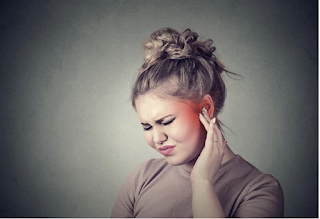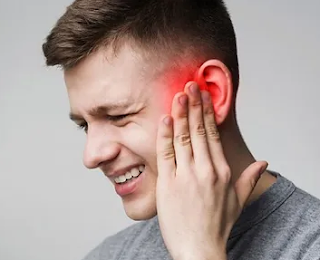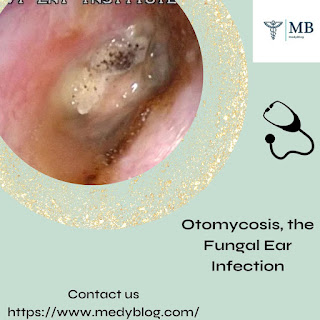Ear Pain or Clogged Ears with A Sinus Infection | Medyblog
Middle Ear Infections or Otitis Media are secondary infections or side effects of other infections like rhinitis (common cold) or chronic sinusitis (inactive sinus infection). Clogged or Blocked Ears and ear pain indicate a middle ear infection. Fever and ear discharge could be other Symptoms of Middle Ear Infection.
Why does chronic sinusitis cause ear pain or clogged ears?
In
acute sinusitis or active sinusitis, the excess fluid secreted in sinuses is
flushed out through the nose. In contrast to acute sinusitis, mucus travels
from the sinuses to the throat in chronic sinusitis. In chronic sinusitis or
low-grade sinusitis, the infection has lived in the body for such a long time
that the body and sinus infection find a balance to coexist peacefully. Our
body uses around 200 ml of water which contains proteins, to clean our nose and
sinuses and clear dust, bacteria, viruses, and fungi that enter when we breathe
external air. With a runny nose, we lose water and proteins. As a part of
finding balance and preserving body fluids and proteins, in chronic sinusitis,
the excess mucus passes from the nose to the back of the throat instead of
flushing it out through the nose, like in acute sinusitis. So, the body figures
out a way to flush out without causing the inconvenience of a runny nose. It
flushes out the discharge from the back of the nose to the throat. In many
chronic sinusitis patients, the only symptom they have is phlegm traveling from
the back of the nose to the throat. (To understand more about sinusitis
symptoms behavior, you can read our article on Acute
Sinus Infection Symptoms.)
In this process, there is a chance for the fluid to escape into the middle ear
through auditory tubes. The auditory tube connects the nasopharynx to the
middle ear.
When the fluid is thick, it can block the auditory tube. Else the fluid travels to the middle ear quickly. The liquid is capable of causing infection due to the bacteria or dust in it, and the thin fluid can cause edema in an auditory tube, i.e., swelling of the auditory tube lining, which can also block the Eustachian tube. Both scenarios lead to ear pain due to the negative pressure created by the blockage. This infection can spread to the ear and cause a low to a high-grade ear infection that can also cause pain.
How is middle ear infection
diagnosed?
An ENT doctor can confirm the
middle ear infection using nasal endoscopy and impedance audiometry. Nasal
endoscopy will show puss at the back of the nose or nasopharynx, and impedance
audiometry will show us the pressure in the ear, which can confirm a middle ear infection. Video otoscopy
can help examine the eardrum. The redness of the eardrum will indicate the
infection, which is otherwise pearly white.
How to treat a middle ear infection?
Home remedies for middle ear infection
Treating sinusitis will solve the problem depending on the grade
of ear infection. You can use the home remedies we suggested in our blog called
"Home
Remedies to Relieve Sinus Pressure."
1.
Small but many
workouts daily
2.
Steam inhalation for 5
minutes only three times a day.
3.
Use spices like
turmeric along with pepper to boost immunity
4.
Stay hydrated
5.
Have adequate sleep
Using these remedies will help
you boost your immunity which can help fight the infection and thinning of the
mucus or secreted fluids. Thinning the secretions will help the secretions go
back into the throat quickly and not stagnate in the nasopharynx. You can
additionally use otrivin nose drops.
Using jalneti can also clear your nose and opening of sinuses
and help you recover.
Why should you consult an ENT
doctor for a middle ear infection?
Although home remedies can heal
middle ear infections, you have to consult an ENT
doctor, who will make the call for you if the home treatment and nose drops are
sufficient. If the infection is more, we will need additional antibiotics.
Middle ear infections can spread to the outer and inner ear
if uncontrolled. It can even cause perforation of the eardrum, which can lead
to major surgery. So, it is better to start home remedies and consult an ENT
doctor. When diagnosed and treated early, it might require antibiotics, but we
can avoid unnecessary major surgery that can take a toll on both your body and
pocket.
Prevention is better than cure
Get
your sinusitis treated and under control. Follow an ENT
doctor's advice carefully and avoid complications that can lead to the use of
additional antibiotics or surgery. Sinus surgery and sinusitis complications
are entirely avoidable. Just because you don't have severe sinusitis symptoms doesn't mean your sinusitis is in check.





Comments
Post a Comment